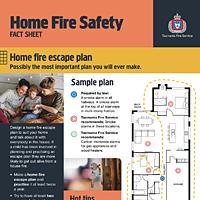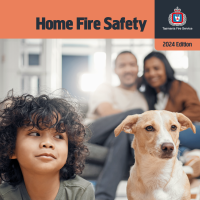Possibly the most important plan you’ll ever make.
Design your home fire escape plan to suit your home and talk about it with everybody in the house.
If a child has been involved in planning and practising an escape plan they are more likely to get out alive in a house fire:
- Make a home fire escape plan and practice at least twice a year
- Crawl low if caught in smoke
- Use windows as an alternative means of escape if safe to do so
- Once out, stay out at a safe meeting place outside your home (e.g. next to your letterbox).
The best fire escape plan is worthless if your escape route is blocked. While deadlocks and security grilles may deter intruders, they can be deadly in a fire. When you are in the house:
- Leave keys in any deadlock, or on a hook (preferably attached to a chain) close to the door or window, and out of reach of intruders
- Make sure that window security grilles and screens open readily from the inside
- Make sure that all windows and doors open easily for all members of your family
- If you have visitors staying over for the first time, show them your escape plan so they know what to do in a fire emergency. Make sure they know where your Safe Meeting Place is located.
Plan your exit from your home. Draw a plan using the grid in the “Home Fire Escape Plan” fact sheet and mark in the exits you could use in a fire emergency. Remember to include two safe ways out of any sleeping areas to your Safe Meeting Place.

Shopping Cart
Shopping cart empty.



